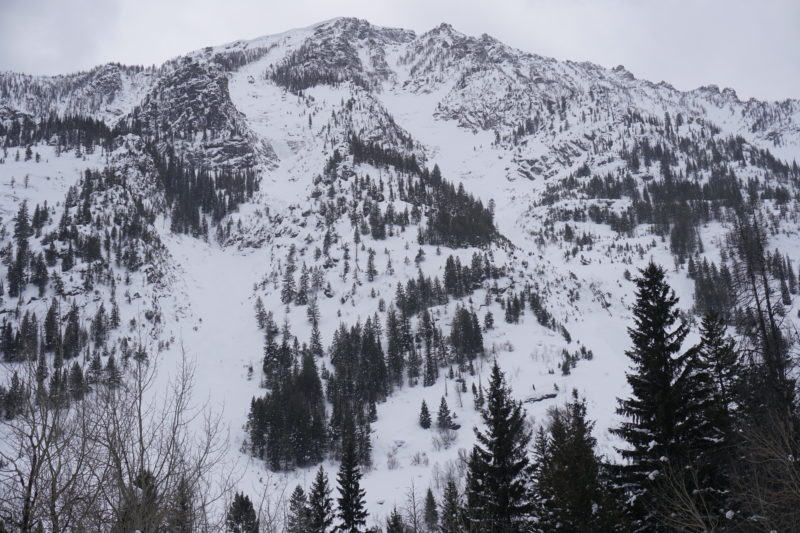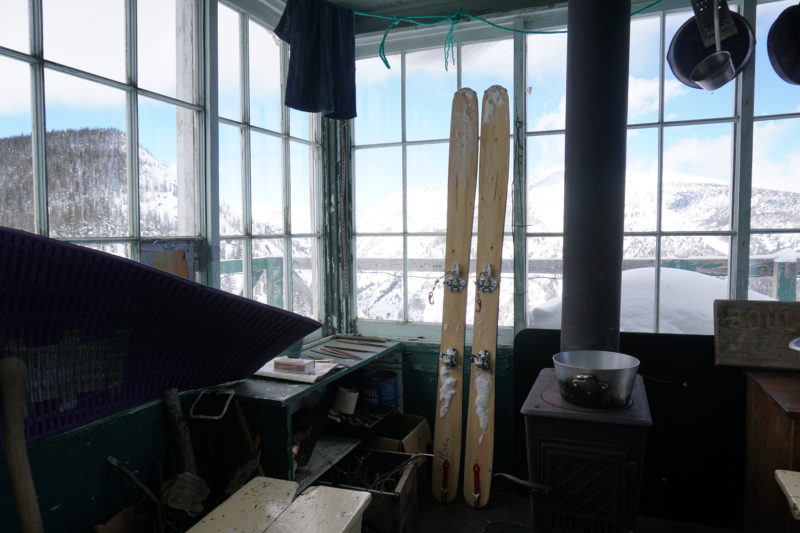Observation Date: 03/09/2019
Route/Location:
Toured up to East Boulder Peak, southern Bitterroot Range, from West Fork Ranger Station. The other usual parking spots were all snowed in. Skied Goddess Col from near summit of East Boulder Peak down into Boulder Creek drainage, and slogged the creek back out to the car.
Weather:
Mostly sunny with intermittent partial cloud cover. Clouds in the distance were fast moving and appeared poised for precip that never materialized. The Nez Perce Camp SNOTEL (5250′ elev.) averaged ~ 25 degrees F during tour (0800 – 1900 hrs).
Wind:
Low-to-no wind, except on the summit ridge (8800′ + elev), where calmer periods were punctuated by cold north-easterly gusts up to 25 + MPH, depositing light amounts of new snow into the chutes below the peak.
New Snow: 0-3″
Avalanche Activity:
From School Point, we observed recent ~ D2 R2 avalanche activity across Boulder Creek on SW aspects on thinner, rocky aspects, likely from solar warming. Loose-wet point releases observed intermittently on sun-affected slopes.
Within the past ~10 days, Goddess itself released a single, massive (D3, R4) post-storm cycle slab avalanche, ostensibly on depth hoar, which in some spots sheered down to the bed surface, leaving exposed rock and sheets of ice. It may also have been a sequence of avalanches triggered in a sort of domino-effect. We observed a single 1-2′ crown near the top, and sidewalls and sub-crowns of varying depths (likely from smaller wind slabs) throughout the chute. Deep debris piles littered the ~3600′ chute all the way to the creek. A 3-5′ deep runnel gouged nearly to mineral soil for the final ~600′ of the slide path.
Other Comments:
We could make out some of the aftermath of this large avalanche from the top, but the complexity and extent of the activity was difficult to make out clearly in the flat light and at far distances (again, the run is ~3600′ overall). Because there were ~ 300′ of apparently moderately wind-loaded slopes at the entrance to the chute pointed toward potential terrain traps, we were hesitant. However, we were also confident that the vast majority of the chute was safe, given that that most of it had released pretty catastrophically, and hadn’t received new snow or substantial wind-loading since.
We cut an approximately 70 lb cornice from a cliff edge about 20′ above the apparently wind-loaded entrance (33 – 38 degree slopes). It landed with a thud. Though parts of it roller-balled a ways, there was no response whatsoever from the surrounding slopes, and we took the green light. The variable slide path made for slightly complex skiing, but the debris skied softer and more fun in many spots than we expected.
Observer: George Gaines
















